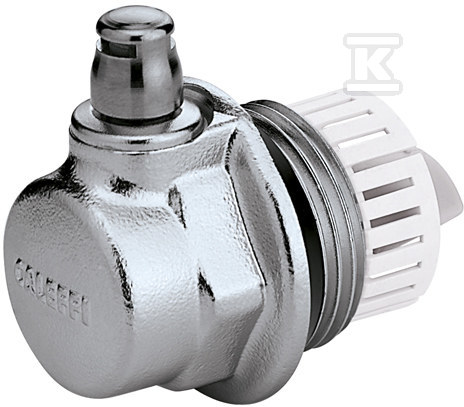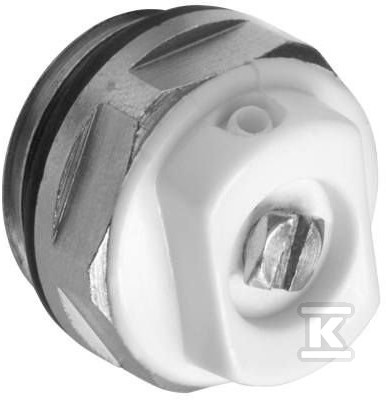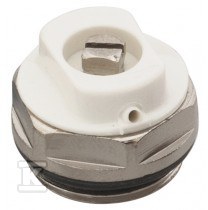Always assess the condition of the entire heating system before the start of the heating season. One of the most important maintenance activities is to check whether the radiators are not air-locked. If your concerns are confirmed, you should bleed the radiator. Not sure where to start? We have prepared a step-by-step guide on how to properly bleed a radiator. You will also learn why radiators become air-locked and how to quickly identify the problem.

Check radiator air vents at the Onninen wholesaler
Why is there air in the radiator?
 An improperly designed heating system is the main cause of airlocks in radiators. The most common design errors include:
An improperly designed heating system is the main cause of airlocks in radiators. The most common design errors include:
- improper leveling of the radiators - omitting the slope towards the air vent valve;
- incorrect and leaky hydraulic connections - even the smallest leaks can cause air to enter the system;
- incorrectly positioned radiator air vent ;
- too few vents.
Please remember that at the beginning of the heating season, radiators are filled with water which often contains air bubbles, which can lead to airlocks in the radiators.
Another factor responsible for the problem with radiators is the inefficient operation of the heat pump, which causes air to separate from the water and accumulate in the radiators. This usually happens when a device with insufficient power has been installed or has not been regularly serviced.
How can you tell if your radiator is clogged with air?
Air-filled radiators reduce the efficiency of the heating system. They cause uneven and insufficient heat distribution in the rooms, which translates into lower thermal comfort for household members, increased operating costs and an increased risk of serious mechanical damage to the installation. Air entering a cast iron or panel radiator, although invisible to the naked eye, promotes corrosion.
If after turning on the heating, the radiators remain cold, heat unevenly or emit characteristic sounds (loud humming or gurgling), these may be signs of air lock.
Complete step-by-step instructions: how to bleed a radiator accurately?
 There is no special preparation required for bleeding radiators, and the entire process takes from a few to a dozen or so minutes for one radiator. A screwdriver or a suitable key is quite sufficient as far as tools are concerned – depending on what manual bleeding valve is installed in the radiator. A small bowl or other container for the drained water, which is usually dirty, will also be useful. The valve should be unscrewed slowly and gently, which will help to limit water splashing to the sides.
There is no special preparation required for bleeding radiators, and the entire process takes from a few to a dozen or so minutes for one radiator. A screwdriver or a suitable key is quite sufficient as far as tools are concerned – depending on what manual bleeding valve is installed in the radiator. A small bowl or other container for the drained water, which is usually dirty, will also be useful. The valve should be unscrewed slowly and gently, which will help to limit water splashing to the sides.
The characteristic hiss means that air is being removed from the system. Dripping water, on the other hand, is a signal that air bubbles have been effectively removed. Before starting work, turn off the heating and wait for the radiator to cool down completely. Modern radiators are often equipped with automatic air vents , which allows limiting the activities of household members to basic system control.
How to bleed a radiator step by step?
- Turn off the heating and close the thermostatic/supply valve.
- Place a container of water under the radiator.
- Start to slowly open the air bleed valve.
- Once the hissing sound stops and water begins to drip into the container, tighten the air release valve.
- Done! You can turn the heating back on.
How to bleed a cast iron radiator?
 Bleeding cast iron radiators requires special care due to the fragility of the components. Radiators should be bled slowly and gradually, controlling the pressure in the system. After completing the work, the valves must be reliably sealed. Otherwise, leaks and other problems may occur in the near future.
Bleeding cast iron radiators requires special care due to the fragility of the components. Radiators should be bled slowly and gradually, controlling the pressure in the system. After completing the work, the valves must be reliably sealed. Otherwise, leaks and other problems may occur in the near future.
How to bleed a bathroom radiator?
The process of bleeding a bathroom radiator is similar to that of a room radiator. Similarly, you should deactivate the heating and prepare a container and a special key or screwdriver. If the bleeding valve is located at the top of the radiator, you do not need a container for water. However, it is worth protecting the top of the radiator with a cloth or towel so as not to wet the wall. Dripping water is a sign that the valve can be closed.
At the Onninen plumbing wholesaler you can order a thermostatic head, an automatic angle air vent and many other control and regulation devices that can significantly reduce the risk of air in radiators.